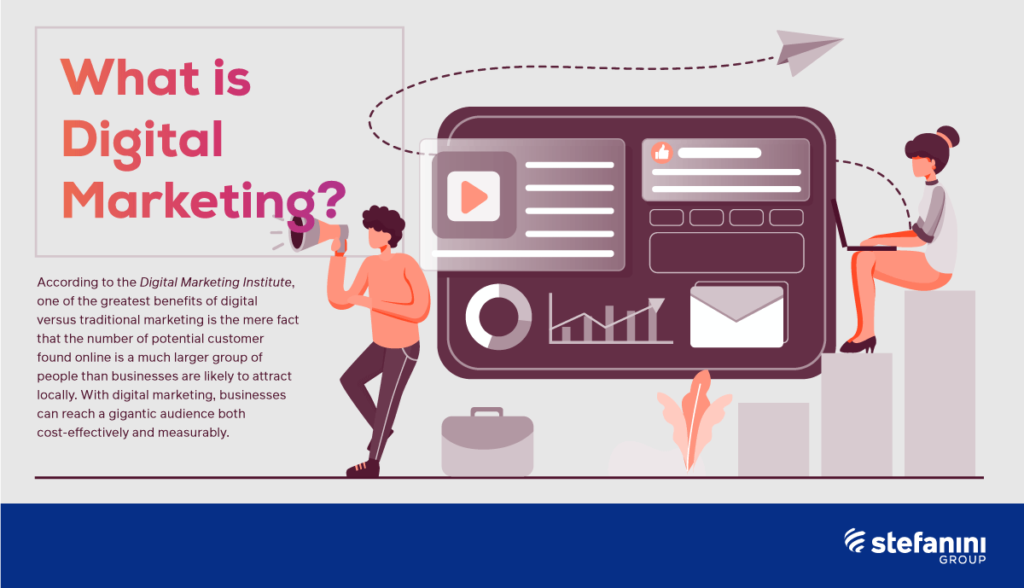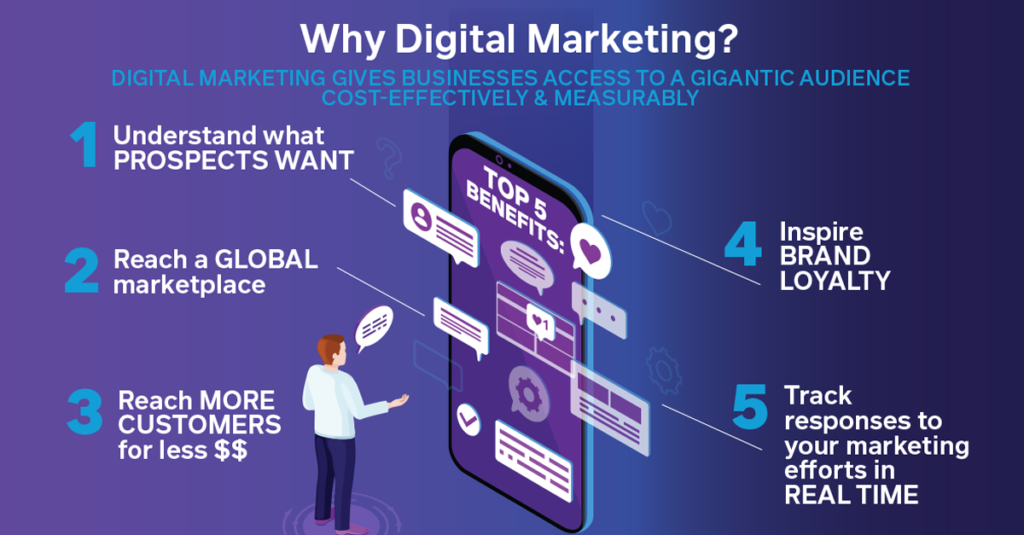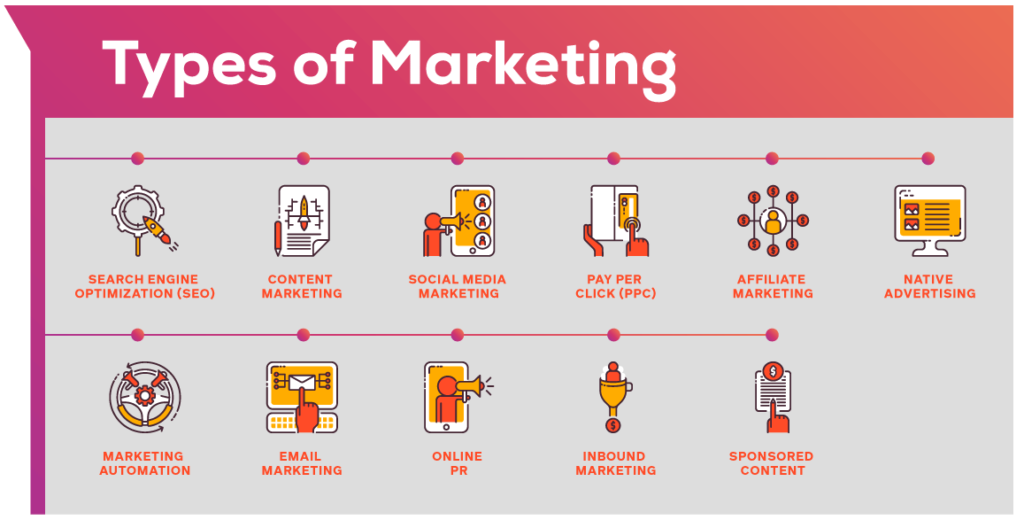At times, the internet can feel like the Wild, Wild West – especially when it comes to digital marketing! Read our guide for tips that lead to marketing online.
It goes without saying that people today spend a significant amount of time online. Unsurprisingly, according to Pew Research, “constant” internet usage among adults increased by five percent in the last few years. What does this mean? Well, in the world of marketing, the way people buy and shop has changed along with the uptick in internet users –meaning offline marketing just isn’t as effective as it used to be.
When defining a marketing strategy, you work to connect with your target audience in the right place and at the right time. So, it makes sense that for a digital marketing strategy to be effective, you need to advertise to your audience where they are already spending most of their time: the internet.
With digital marketing, you can do that and more.
What kinds of digital marketing trends will define the 2020s? Get our perspective here!
What is Digital Marketing?

It seems obvious that digital marketing encompasses all marketing efforts that use the internet or an electronic device. To survive in today’s digital world, Digital Marketer makes the case that businesses need to leverage channels such as social media, search engines, email, and other websites to connect with existing and prospective customers.
These trends point to a marked departure from the print ads, phone communication, and other forms of physical marketing that traditional marketing includes. While still valuable methods of reaching customers, digital marketing gives brands endless possibilities that include email, video, social media, or website-based marketing opportunities.
Thanks to the advent of digital marketing, competitive businesses are seemingly required to have the following in place:
- A website
- Social media presence
- Digital ad strategy
By posting digital content on these platforms, consumers have the ability to learn more about the brands from which they want to buy. Since digital marketing has so many options and strategies associated with it, budgets allow for a variety of creativity and experimentation when it comes to the marketing tactics a business will use. Tools like analytics dashboards allow you to monitor the success and ROI of your campaigns more than you could with traditional promotional content like print ads and billboards.
Prepping for 2021? Get ahead on the trends you should be paying attention to you!
Why Digital Marketing?

According to the Digital Marketing Institute, one of the greatest benefits of digital versus traditional marketing is the mere fact that the number of potential customer found online is a much larger group of people than businesses are likely to attract locally. With digital marketing, businesses can reach a gigantic audience both cost-effectively and measurably.
There are a few other benefits that come with marketing online:
- Having the chance to interact with your prospects and understand exactly what they are looking for
- Being able to reach a global marketplace
- You are able to reach more customers for less money than traditional marketing methods
- You can get to know your audience and invite them to know you personally, which can lead to brand loyalty
- Finally, you can, in real time, track responses to your marketing efforts
No matter your feelings toward the digital technologies used in marketing, there is one important aspect to remember: both your existing and prospective customers are spending the majority of their time online. They might be looking – right now! – for a business like yours. However, if they can’t easily find you online, the harsh truth is that they will likely go with someone else.
Like it or not, this is how people do business today. When someone has an interest in your business or brand, the first thing they are going to do is research you online and see what they can learn. They expect you to have both a website and a social media presence. They may also be looking for reviews so they can learn what other people are saying about your company and whether you have a reputable reputation.
Unfortunately, if potential customers can’t find you on the internet, they may decide that your business is not legitimate. You may lose prospects as they will not take your business seriously and will look to purchase goods and services from a competitor. And once they make their decision, it will be even harder to entice them to give your business a shot.
This brings us to an important point – remember, your competitors are also online. To achieve success, you should start paying attention to what your competitors are doing and learn from their online marketing efforts. By studying your competitors, you will get an idea of what is working and what does not work. Take a look at competitors’ web presence. What kind of content do they rely on? Do they maintain a blog? Do they utilize a lot of graphics and videos? Look at how they communicate their brand and what makes them unique, including how they engage with their audience. By using this approach, you can get an idea of how you can create an effective customer journey.
Types of Marketing

There are a spectrum of tactics that fall under the umbrella of digital media and marketing. From a business’ website to online branding assets like online advertising, landing pages, email marketing, and online brochures, there are a variety of ways to grab prospective customers’ attention.
The most effective digital marketers have a clear idea of how each digital marketing campaign supports their overarching goals, as well as how to leverage both free and paid channels.
From Hupspot, here’s a quick rundown of some of the most common digital marketing channels:
1. Search Engine Optimization (SEO)
Commonly referred to as “SEO,” this is the process of optimizing your website to rank higher in search engine results pages, which increases the amount of organic (or free) traffic your website or blog receives.
2. Content Marketing
Content marketers create and promote content assets in order to generate brand awareness, traffic growth, lead generation, and customers. Blog posts, ebooks and whitepapers, and infographics all make up a part of a content marketing strategy.
3. Social Media Marketing
With this practice, you can promote both your brand and content on social media channels like Facebook, LinkedIn, Twitter, and Instagram. Social media marketers are able to increase brand awareness, drive traffic, and generate leads for their business.
4. Pay Per Click (PPC)
PPC allows you to drive traffic to your website by paying a publisher every time your ad is clicked. One of the most common types of PPC is Google Ads, which enables you to pay for top slots on Google’s search engine results pages at a price “per click” of the links you place. Other channels include Twitter ad campaigns, paid ads on Facebook, and sponsored messages on LinkedIn.
5. Affiliate Marketing
Through this type of performance-based advertising, you receive commission for promoting someone else’s products or services on your website. Affiliate marketing channels include posting affiliate links from your social media accounts and hosting video ads through the Youtube Partner Program.
6. Native Advertising
These types of advertisements are primarily content-led and featured on a platform alongside other, non-paid content.
7. Marketing Automation
With dedicated software, you can now automate basic marketing operations. Some of the most commonly automated functions include social media post scheduling, campaign tracking and reporting, and email newsletters.
8. Email Marketing
Promote content, discounts and events, and direct people toward your website through email marketing. Common emails sent during a campaign include customer welcome messages, holiday promotions, and blog subscription newsletters.
9. Online PR
Secure earned online coverage with digital publications, blogs, and other content-based websites. Maximize PR efforts by reaching out to reporters via social media, responding to comments left on your personal website or blog, and engaging online reviews of your company.
10. Inbound Marketing
Through this marketing methodology, you attract, engage, and delight customers at every stage of the buyer’s journey, creating a customer experience that works with them.
11. Sponsored Content
Pay another company or entity to create and promote content that discusses your brand or service in some way. Influencer marketing is the most common form of this strategy, in which a brand sponsors an influencer in its industry to publish posts or videos related to the company on social media.
Ready to create a ‘WOW’ experience? Learn more about our digital marketing solutions!
Digital Marketing with Stefanini
In an increasingly connected world, your approach to marketing must be just as integrated. We will create customized solutions for your business by innovatively combining the worlds of marketing and technology, while keeping the focus on end-user experience.
We work to continuously improve your marketing strategy to ensure your business thrives with better interactions, engagement, loyalty, and brand awareness.
Looking for solutions that support your digital marketing plan? We have you covered. Connect with a specialist today!
In the meantime, download our guide, “Navigate Digital Marketing in the New Decade” for more tips, tricks, and more.




















